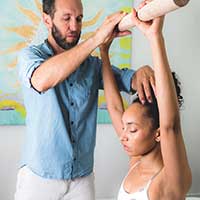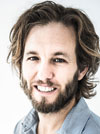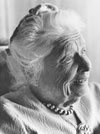Rolfing® is the name that was given to the manual therapy and educational process that was developed by Dr. Ida P. Rolf in the 1950’s. Originally called Structural Integration, it addresses posture, chronic and acute pain, and mobility, and has an unequalled ability to change a person`s posture, structure and movements.
Rolfing is a process of treatments with an intention to bring your parts into a more harmonious relationship with each other, and your whole being into a more harmonious relationship with your environment. Gravity is a constant force on us throughout our lives. When our structures are well balanced and organised, its’ constant pressure is felt more like a nourishing support than a depressing weight.
Our lives are rich with a multitude of experiences. Some of them, like accidents, surgeries, the chairs, shoes, laptops and smart phones we use, and of course, our dominant negative emotions, move our body out of our ideal alignment. The Rolfing Method of Structural Integration aims to unwind the tensions and patterns that hold us in these unhelpful postures and give us an experience of a more balanced perspective.





